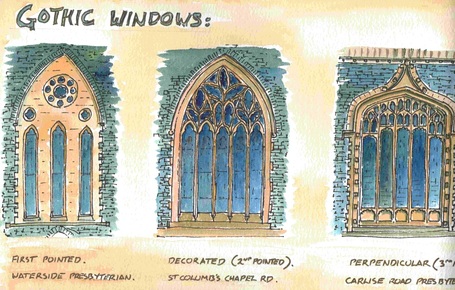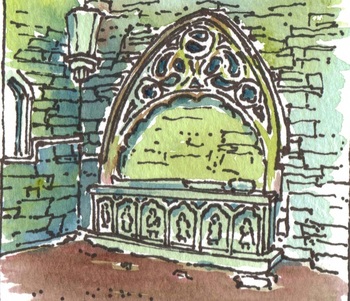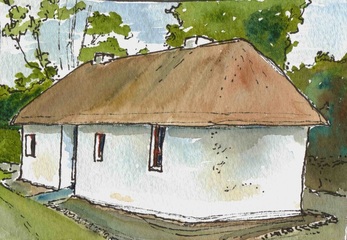Gothic |
|
|
The arrival of the Normans, (who are so closely associated with Romanesque architecture in England that it is referred to there as ‘Norman’) was quickly followed by the first use of the pointed arch in Ireland. This is the defining characteristic of Gothic architecture. Over the next three hundred years the style developed and went through a number of phases, and these are likely to have been reflected in the buildings of the city. Though these are now gone revivals in the Nineteenth Century have left examples of the three main types: First Pointed c.13th C; Decorated c.14th C; Perpendicular c.15th C.
It is difficult to know what the gothic buildings of medieval Derry really looked like, but one surviving fragment nearby clearly indicates that its sophisticated use in the city should not be discounted. This is the tomb reputed to be that of Cooey Na-Gall O’Cahan (who died in 1395) in the chancel of Dungiven Priory. It is decorated with images of Scottish Galloglasses (mercenaries) and set within a niche vaulted by a Gothic arch supported by very fine stone tracery. This work is in a developed form of the Decorated Style with full curves and scrolls. Ordinary medieval buildings are indicated as small, white structures with hipped thatched roofs in some of the campaign maps of the English in the 1600’s. This mud walled building in Fermanagh is the best example of the type to survive in Ulster. Manus O’Donnell’s life of Columkille, written in the 1530’s, reveals a first hand knowledge of Derry referring to a tavern and naming places were miracles had occurred. Buildings such as this would have made up the ordinary fabric of the place at this time. |
|
|




